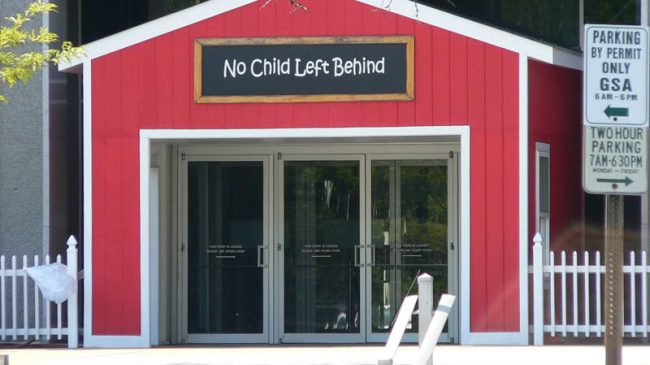Congress finally did it. The much beloved or much vilified, depending on your point of view, No Child Left Behind Act is dead. The Elementary and Secondary Education Act, or ESEA, has replaced it. The new federal education law is a mixed bag that takes some steps in the right direction, but falls well short of empowering state and local innovations and the kinds of education reforms that have proven most successful.
The ESEA is getting praise from both sides of the political spectrum. American Enterprise Institute’s Rick Hess argues that the law keeps the good elements of No Child Left Behind while pushing more decisions down to the state and local level, which is closer to the children being educated and where there is more accountability.
Meanwhile, Joanne Weiss, former chief of staff to former Education Secretary Arne Duncan, says that the new law cements President Obama’s and Duncan’s education legacy of setting high standards and using evaluations and metrics for accountability.
The law has some good points. No Child Left Behind was heavy-handed, micromanaging states and school districts in a way that undermined innovation and local knowledge. The disconnect between federal-level rulemaking and local-level educating was a constant source of strife and a distraction from improving education for children. The new law requires measurement of progress and evaluation by states and schools, but allows a lot more flexibility and a broader range of metrics. It also encourages accountability at the local level, rather than pushing accountability on to Congress.
The Elementary and Secondary Education Act also sets up new transparency requirements, particularly on spending and budgets, so that anyone can see how much money is being spent in every school and where that money comes from.
It also establishes a pilot program for 50 school districts to test a “weighted student formula” model in which funds follow individual students to whichever schools their families choose, and schools are given more autonomy on how to use funds to improve achievement and appeal to families to send their children there. This approach has been used with great success in states from Rhode Island to Hawaii and school districts from Baltimore to San Francisco. It was a big part of the massive turnaround of schools in Louisiana after Katrina. My colleagues at Reason Foundation evaluated weighted student formula in 15 school districts in their Weighted Student Formula Yearbook 2013 and found it strongly correlated with substantial improvements in academic achievement, including for disadvantaged kids.
A minor but interesting part of the ESEA addresses the problems experienced in so many localities with kids and parents caught up by police or child protective services for walking to school. The law explicitly states that nothing in it will prevent a kid from walking to school with permission and putting responsibility for safety on the parents-where it belongs.
Of course a gigantic federal education law can’t be all sunshine and roses. The over 1,000 pages of this law contain many, many rules and restrictions that micromanage states and school districts. While it allows states to exit from Common Core if they opt to, it clings to a centralized notion of a nationwide curriculum and method of teaching that curriculum. The federal government will never be better than all states and localities at improving curriculum and teaching methods. And ESEA doesn’t allow school districts that are very high performing to opt out of restrictions. It should. Clearly, high-performing schools are doing their jobs well and should have the freedom to innovate for even greater gains.
Put another way, ESEA still represents the federal government trying to dictate education policy. It’s a failure of federalism. State and local governments should be much better at managing education than Congress. But then again as long as the federal government is providing funding they’re going to set policies, so real state and local autonomy in education would require foregoing federal education funding, and that’s not going to happen anytime soon. Which is too bad because states have shown an ability to improve education achievement on the ground, a reality that is overlooked every time the federal government shakes its moneybags.
Florida is a great example. Back when Jeb Bush was governor, he enacted a number of reforms that, according to the University of Colorado, led to substantial and sustained improvements in education achievement. An emphasis on school choice, charter schools, testing and accountability fueled Florida’s educational achievement to outstrip the national average. Notably, Florida’s African-American and Hispanic students’ academic results have improved faster than the national average since 1998.
Florida is not alone. Other states, such as Massachusetts and Arizona, achieved major improvements in educational achievement with flexibility, accountability and standards. A key to this progress was implementing charter schools and school choice, thereby forcing schools to compete for students by providing what parents want. All this in spite of, not because of, federal education policies.
The fact is, state and local governments have far more incentive to ensure their education system is high functioning than Congress and federal bureaucrats ever will. I hope that next time Congress takes up an education bill, they look at who is succeeding and why, and dramatically decrease the federal role in education, letting state and local governments take the lead again.
Adrian Moore is Vice President at Reason Foundation.

